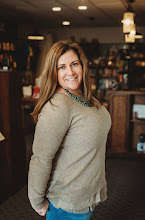I ordered it.
Then, I saw it mentioned on Betsy Bird's blog this week. I waited with anticipation.
It arrived last night. I put it aside to read during the day today.
I was not disappointed.
So, let's start with the title. An attention grabber for sure. But when I see that two other books in the series are: Divorce is the Worst and Death is Stupid - all part of the Ordinary Terrible Things series, I can see what types of topics we are covering here. The layout - collage with kraft paper, text looks like it was written with a marker on the paper - could inspire students to create their own books. And then, we have the content. Let's start with the Kirkus review:
Kirkus Reviews (February 15, 2017)
A small child asks Grandma what sex is and gets a wise response.Higginbotham follows titles on death and divorce with a refreshingly different take on a child’s sex question. A speech-bubble conversation, occasionally interrupted by eating and play, accompanies narrative answers, stated simply but directly and stressing the child’s right to be curious. This is not a biology lesson or physical description; it’s ethical and emotional. “Sex is private.” It includes motion and feelings that grow and change as a child grows up. With whom and how “belongs to no one else but you.” The child reiterates the lesson: what’s most important is the personal choice: “I am the one-and-only, top-boss, in-charge decider about sex in my life for my whole life.” Set on kraft paper, the collage illustrations have been assembled from a variety of materials including magazine pictures and photographs. The pair are black: the child has a reddish Afro and Grandma sports beaded hair (and very cool shoes). Images of Grandma’s row-house neighborhood and comfortable apartment, decorated with religious images and looking out on trees, tell readers more about their world. Several pictures reinforce the final message that the internet is not a good place to find answers to this question; ask a savvy grown-up instead. With its strong message about sexual assault, this is a necessary addition to sex-education collections. (Picture book. 4-9)
To say that I love this book would be an understatement. If you are looking for a book to hand off to a child so they can figure out what sex is, this is not your book. There is no clinical descriptions or illustrations here. (I will say, It's Perfectly Normal and the younger versions: It's Not the Stork and It's So Amazing would be great if you're looking for that.) What this book does well is empower. It reminds kids that they are in charge of their body. It tells them to pay attention to signs that they are uncomfortable. It points out that looking for pictures or more online will not get you what you need, and can make you feel uncomfortable. This is a book that is a great jumping off point for younger readers. As for the two older ones in my home, they will be required to read it. I don't think we can talk about sexual assault early enough or often enough.
This book will find a home in the picture book collection in my classroom. That being said, if any local parents want to borrow it, please let me know. I highly recommend it.













